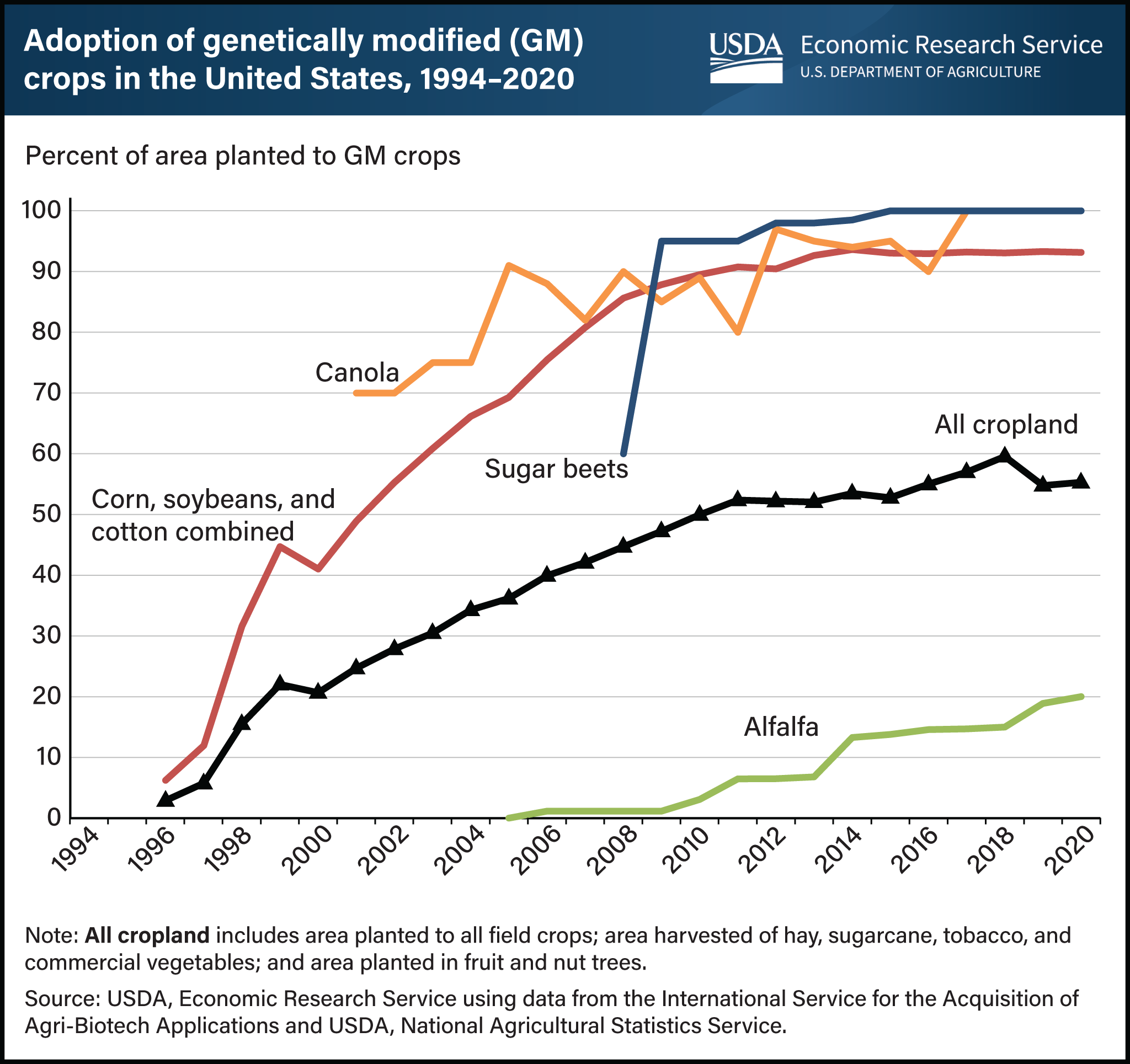More than half of harvested U.S. cropland uses seed varieties with at least one genetically modified trait
- by Keith Fuglie
- 8/7/2023

Genetically modified (GM) varieties of corn, soybeans, and cotton were introduced in the United States in 1996, and they became the dominant seed choice among farmers within a few years. Later, GM varieties were widely adopted for canola and sugar beets. By 2020 (the most recent year for which data are available), about 55 percent of the total harvested cropland in the United States was grown with varieties having at least one GM trait. The most prevalent GM traits are herbicide tolerance and insect resistance. Private seed companies lead the development of GM traits—a shift away from public institutions—stimulated by judicial rulings that created protections for intellectual property in crop genetics and other biological inventions. Advances in biotechnology provided a new means of improving crops by allowing genes with specific, inheritable traits to be transferred to distant crop varieties. GM seed use also is catching on in alfalfa, potatoes, papaya, squash, and apples. This chart appears in the USDA, Economic Research Service report Concentration and Competition in U.S. Agribusiness, published in June 2023.

